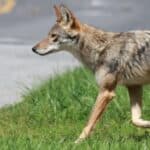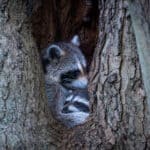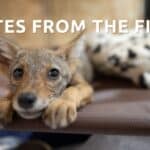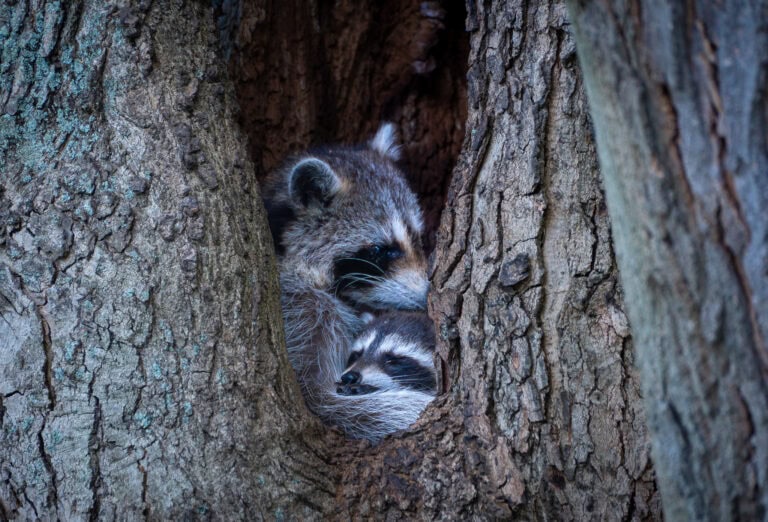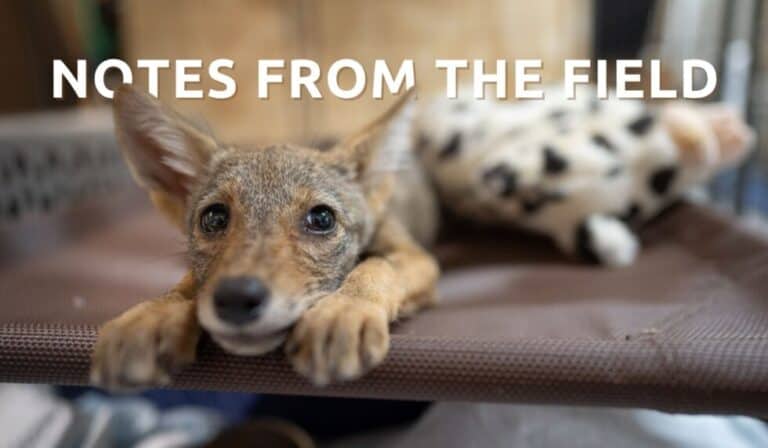I am thrilled to welcome Project Coyote’s newest Science Advisory Board member, Joanna Lambert.
A lover and observer of the wild since she was a child, Joanna has enlightened and energized her students at numerous universities across the United States, and is currently a professor in the Program in Environmental Studies at the University of Colorado-Boulder. Among other accomplishments and honors, she holds advisory positions with the Rocky Mountain Wolf Project and the United Nations Environment Programme, co-founded the Northwest Primate Conservation Society, and currently serves on the Species Survival Commission of the International Union for the Conservation of Nature.
Joanna has recently written about the effects of the pandemic and lockdown on both humans and wildlife—read more here and here, and watch a video of Joanna speaking about the issue here.
We are honored and proud to have Joanna on our team, and I hope you enjoy reading our interview below about her current research with coyotes and her thoughts about carnivore conservation, recovery, and coexistence.
For the wild ones,
Camilla Fox
Founder & Executive Director
P.S.: Joanna will be presenting a webinar on October 7 exploring “Fear, Wild Things, and Coexisting with Predators” — register here. We hope you can join us!
Camilla: Can you share a bit about your background and how you came to advocate on behalf of North America’s wild carnivores?
Anybody who has their eyes open knows we are losing habitat, species, and overall ecological integrity at every scale – from our own backyards to landscapes across the planet. This has left many with a profound sense of loss – something that has been called “ecological grief”. In a Guardian article published in October 2014, Jo Confino posed a question: “Why aren’t we on the floor doubled up in pain at our capacity for industrial scale genocide of the world’s species?”
I am bringing up ecological grief because it helps me to understand my own narrative as a scientist and how I came to advocate on behalf of North American carnivores. I am a field ecologist and conservation biologist. My research takes me to Yellowstone National Park as well as to equatorial Africa where for 30 years I have observed extraordinary loss to biodiversity that has consequences not only for plants, animals, and habitats but also human quality of life. I return to Africa regularly, noting dramatic change from only a few months or years prior: forest fragments gone, animals no longer seen. Each time I return to the US the anguish I feel takes longer to dispel.
In a recent interview, I argued that we should use our ecological grief not to paralyze ourselves, but instead to implement action. With this in mind, my current research questions and advocacy work have been shaped by two sources of hope that are antidotes to this ecological grief: First, that some species, such as coyotes, are able to persist despite what humans have done to their habitat. And, second, that we have tools in our conservation toolbox, such as rewilding, that can put species back into areas where they once were. It is for these reasons that I am investigating resilience in coyotes that live in human-dominated landscapes and am also heavily involved in the efforts to restore gray wolves to their native habitat in Colorado.
You’ve done some exciting research focused on coyotes—in particular, regarding coyotes in urban areas. What goals and objectives do you hope to accomplish with this research?
I love that some species are not only persisting despite what we have done to the natural world, but in some cases are thriving! As you know, coyotes have been persecuted by humans for decades. Despite this, they have expanded their range substantially – from Alaska all the way down to southern Panama. This success is attributable in part to their ability to exploit habitat running the gamut from urban centers and suburbia to agricultural and rural landscapes. Human-dominated landscapes present coyotes with novel and expanded niche space in which they are less likely to be eaten by natural predators such as wolves, and where they have access to diverse foods such as Cheetos, birdseed, and other city-adapted prey species such as rats. We are asking: How are these new “top-down” (predation) and “bottom-up” (food) regimes shaping the adaptations of coyotes? Are rates of genetic change occurring faster in cities, as has been demonstrated in other animal species? And, while we know that so-called “urban coyotes” can be distinguished behaviorally from their rural counterparts, are these differences genetically and physiologically detectable? To address these – and other – questions, we are working at a range of sites where coyotes confront diverse dietary and predation pressures. Yellowstone National Park—where coyotes are preyed on by wolves and consume a wild diet—represents one end of the continuum of study sites, and Denver—where they encounter virtually no predation and consume an anthropogenic diet—stands at the other extreme. We are measuring coyote behavior, gut microbiome, genome-wide diet-related genetics, gene sequencing of diet, and endocrine markers of hormones known to shift in the course of adaptation to human-modified landscapes. While there have been many superb studies undertaken on coyotes, the work that we are doing differs in that it is completely non-invasive.
What are the primary methods and methodology you use for your coyote research projects, and why do you focus on noninvasive research techniques?
There is a tradition in carnivore biology to use invasive monitoring such as radio-tags and GIS collars to study species such as wolves, coyotes, and bears. These methods come with costs—animals can die in the course of being immobilized and tagged. In one example from a study in the late 1990s, every study pack of darted and radio-collared African wild dog went extinct, while nearby packs without collars were not impacted. But because of my work with primates I have a different mindset about studying animals and I know non-invasive methods can work even though it is a much more difficult approach. I have spent a lot of my career working with species for which these methods would be considered unethical (e.g., no one will ever get permission to radio-collar a chimpanzee). And, I have done field observations on species that have been persecuted by bushmeat hunters for generations and are completely unhabituated—this means that I am accustomed to spending months searching for study subjects, and hiking sometimes over 20 kilometers daily through arduous habitat such as swamp and rainforest before getting just a handful of data points. Also, happily we now have multiple sophisticated methods that we can use to get information about mammal biology from feces. Along with my colleagues at Pennsylvania State University, University of Washington – Tacoma, and Colorado State University we are collecting information on genomics, diet, and hormones—all from poop!
You’ve been involved in the effort to restore wolves to Colorado. Why do you think this is important, and how does your work in advocating for tangible ways of reducing conflicts between humans and predators dovetail with these efforts?
Rewilding works. As of the year 2000 there were more than 170 reintroductions of predators globally. One of the most successful rewilding efforts occurred when the US Fish and Wildlife Service reintroduced gray wolves to Yellowstone National Park where they had been extinct since the 1940s. From the Yellowstone success story, we have learned a huge amount about what happens when wolves and other apex predators are restored to landscapes. In short, putting an apex predator back into a landscape where they previously existed results in a restoration of ecological integrity and interactions among plants and animals alike.
Reintroducing predators is invariably fraught with controversy. Though a majority of Colorado citizens is in favor of reintroducing gray wolves, wolf politics are complex, with multiple voices and stakeholders involved. Nonetheless, humans have lived with wild animals in the same landscape for our entire existence; even as recently as 11,000 years ago we were wrangling with species such as saber-toothed cats and cave bears! And people have been using guard animals with their livestock herds for many centuries. While we have lost a lot of this knowledge, the alternative—killing everything that feels threatening—is unconscionable and simply not sustainable. We must relearn how to live with predators. We know it can be done. There are wolves living in densely populated regions of Europe such as Italy, Spain, France and elsewhere, and even with 1.4 billion people, India still has tigers, leopards, and wolves, demonstrating that large-bodied predators and dense human populations can coexist. Moreover, rewilding provides a means to redress some of the ecologically detrimental change we have wrought on our wild landscapes. Mahatma Gandhi once said, “the greatness of a nation and its moral progress can be judged by the way its animals are treated.” In my case, knowing that gray wolves have been restored to a portion of their historical range in the northern Rockies and that they might also be returned to Colorado goes a long way towards healing ecological grief. The inherent benefit of this process is also backed by decades of sound science.
We are certainly living through an unprecedented time with the coronavirus pandemic. Can you share some of the lessons you think we might learn from this experience as it relates to wildlife conservation and our relationship with the non-human animal world?
Excellent question. We are living through the devastating consequences of our incessant, selfish destruction of natural systems, our never-ending insistence that the natural world serve only one species: ourselves. Scientists have been warning us for decades of the inevitability of pandemics as we remove those animal species that we don’t want, replacing them with others. Untold numbers of pathogens exist in wild animals, the vast majority of which are novel to humans, such as the COVID-19 virus. As humans claim dominion over the remnants of our ecosystems by extirpating apex predators and thereby allowing others to become overly abundant, trading and eating animal parts, assuming that animals are here for only for us, so too have we shaped the opportunities for new and ominous diseases to flourish by presenting ourselves as alternative hosts. We cannot blame Mother Nature for this. It is the inevitable consequence of own actions—species evolving in the form of a pandemic.
People are scared and as a social primate species, we are neurally wired to seek out the physical proximity and comfort of others during stressful times, and right now we can’t. Ironically, one of the ways that people have been coping with the social isolation wrought by the COVID-19 pandemic is to howl like one of the species that humans nearly completely extirpated in the 20th century: gray wolves. In some parts of the country some people are yipping and yowling like coyotes as a way to stay in touch in the evenings. Here in Colorado, of all the noises we could have chosen – —banging pots and pans, honking car horns— people chose to howl like gray wolves! I don’t think this is an accident. Humans and wolves have been in close association for over 35,000 years. In Eurasia, we shared a landscape, ate similar foods (mammoth was a favorite), and dealt with the same harsh and bitterly cold glaciated world. Humans have literally been hearing wolf howls for millennia.
What is this tapping into? Neuroscientists have recently demonstrated that a sense of nostalgia plays an important role in the brain. The songs from childhood, for example, stimulate parts of the brain that yield neurochemical rewards. And, data show that nostalgia may have evolved to provide comfort. No one can deny that the sound of wolves howling in the distance is hauntingly familiar. But, by the mid-1940s, they were extirpated from most of the US. What does it say about our relationship with wolves that we have turned to howling to each other for support in a time of despair? I suggest that it’s because we yearn for something that we have lost.
What’s the significance of the “FLS” designation in your professional credentials?
Haha! Excellent question and I am happy to answer. A few years ago, I received an email message indicating that I had been elected as a Fellow of the Linnaean Society (FLS). The Linnaean Society of London was founded in the 18th century as homage to the great Carolus Linnaeus who gave us the Latin-based scientific naming system we use for all living things (e.g., he named us “Homo sapiens”). The Linnaean Society is also very famous for being the forum where Charles Darwin and Alfred Russel Wallace first presented the theory of evolution by natural selection. Ever since I was a young girl, I have been fascinated by naming things and with actively engaging with wild species. When I was about nine years old, I started a Birds of Prey club in which a primary goal was to memorize the Latin names of birds! Being a Fellow is quite an honor and the society asks that its Fellows advertise by using the “FLS” after their name.
To read more about Joanna’s work for wildlife check out these links:
Personal website – Wild mammals, wild places www.joannalambert.com
Recent interview in The Revelator – Will Voters Welcome Wolves Back to Colorado?
Recent interview in CU Today – As rare animals disappear, scientist faces ‘ecological grief’
Video aired on CBS and NBC – Why are we howling like wolves at night?
Recent interview in Popular Science – The real reason we’re seeing more wildlife during the pandemic
Op Ed in The Daily Sentinel – Wolves and pandemics: Let’s not get medieval
CBS Denver news story – University of Colorado Professor Educates Students on Complex Gray Wolf Issue
Washington Post story – Colorado Voters will decide whether to bring back endangered wolves
Story in The Colorado Sun that discusses research in Lambert Lab – Coyotes figured out how to survive in the city. Can urban Coloradans learn to coexist?

